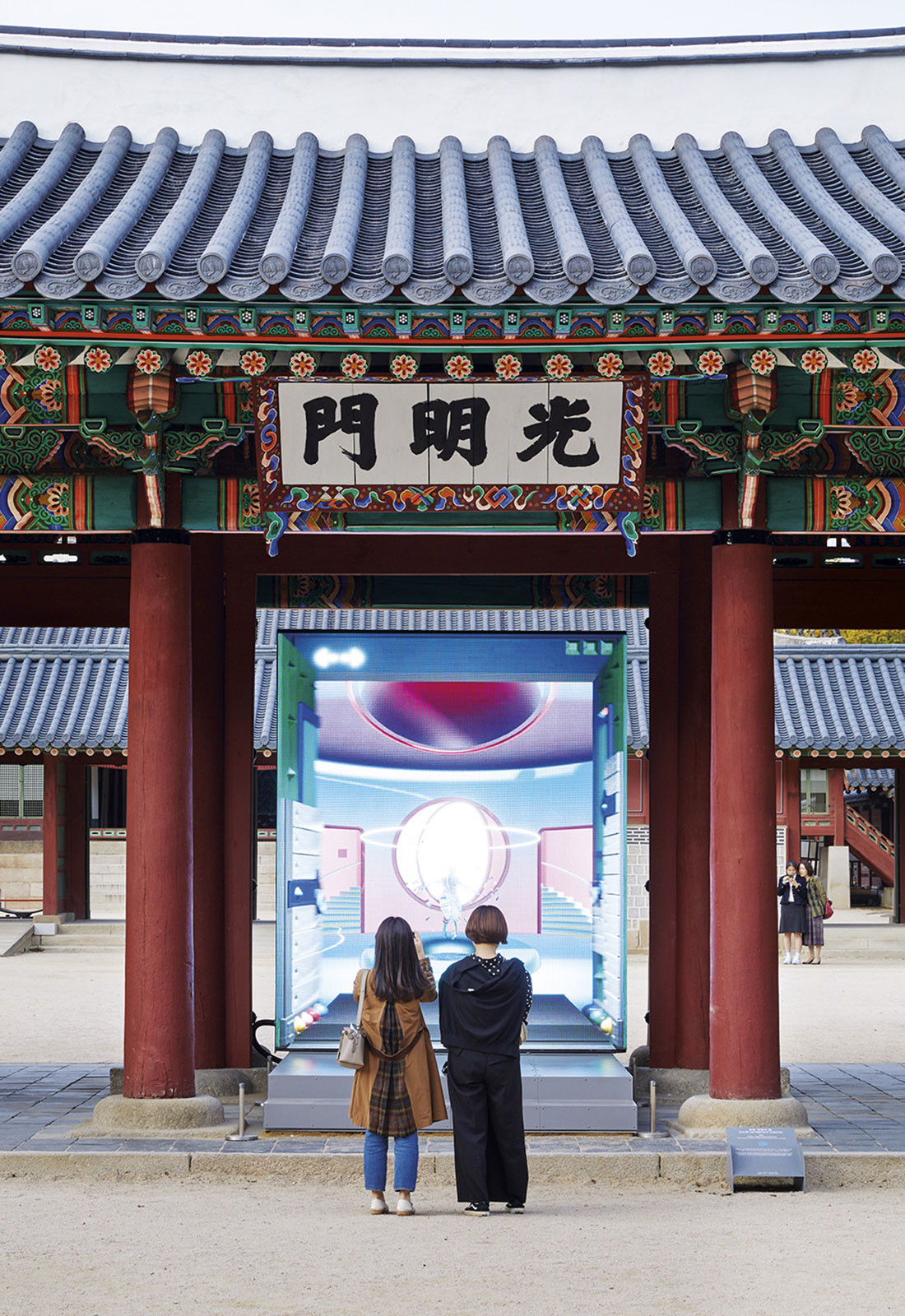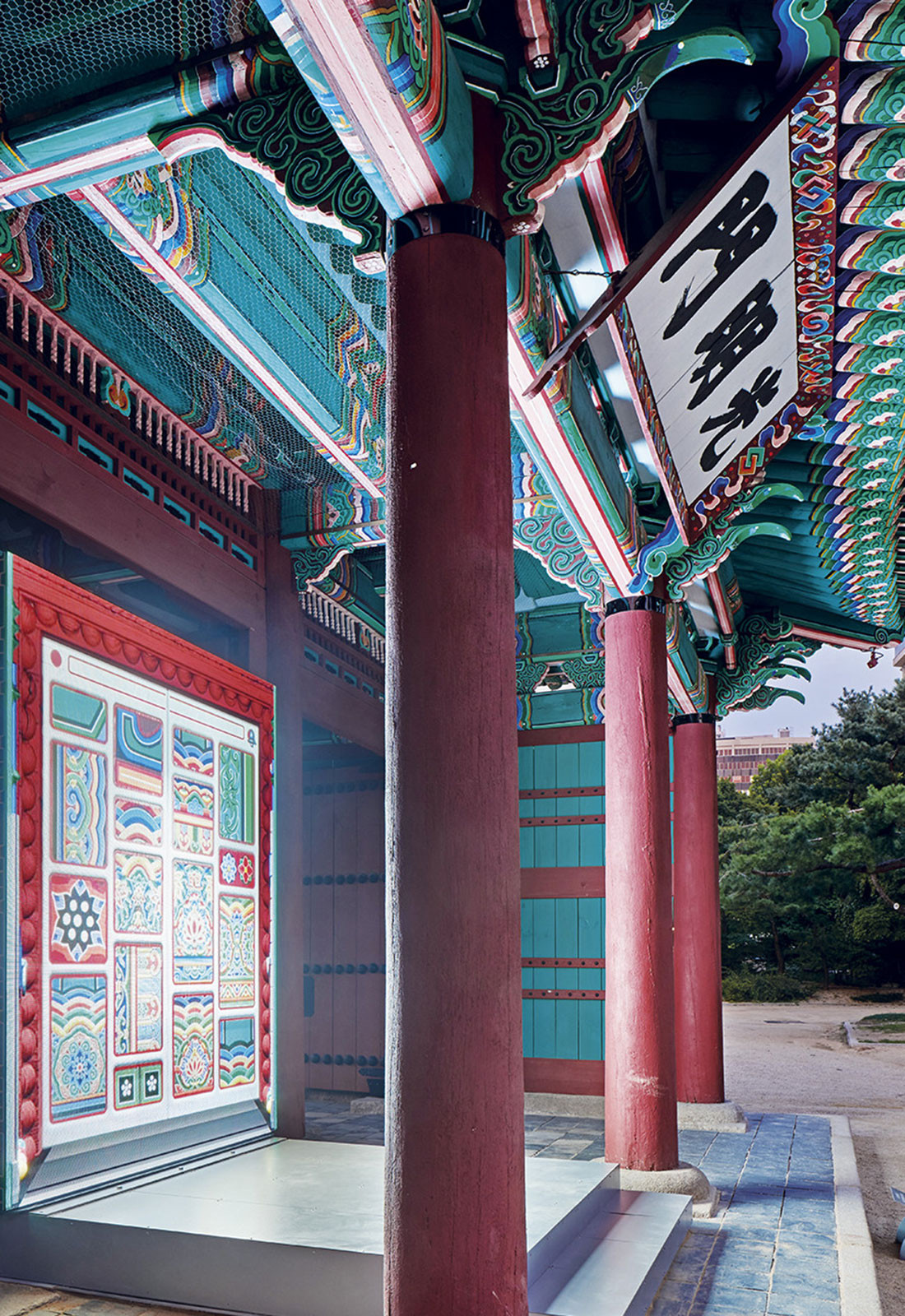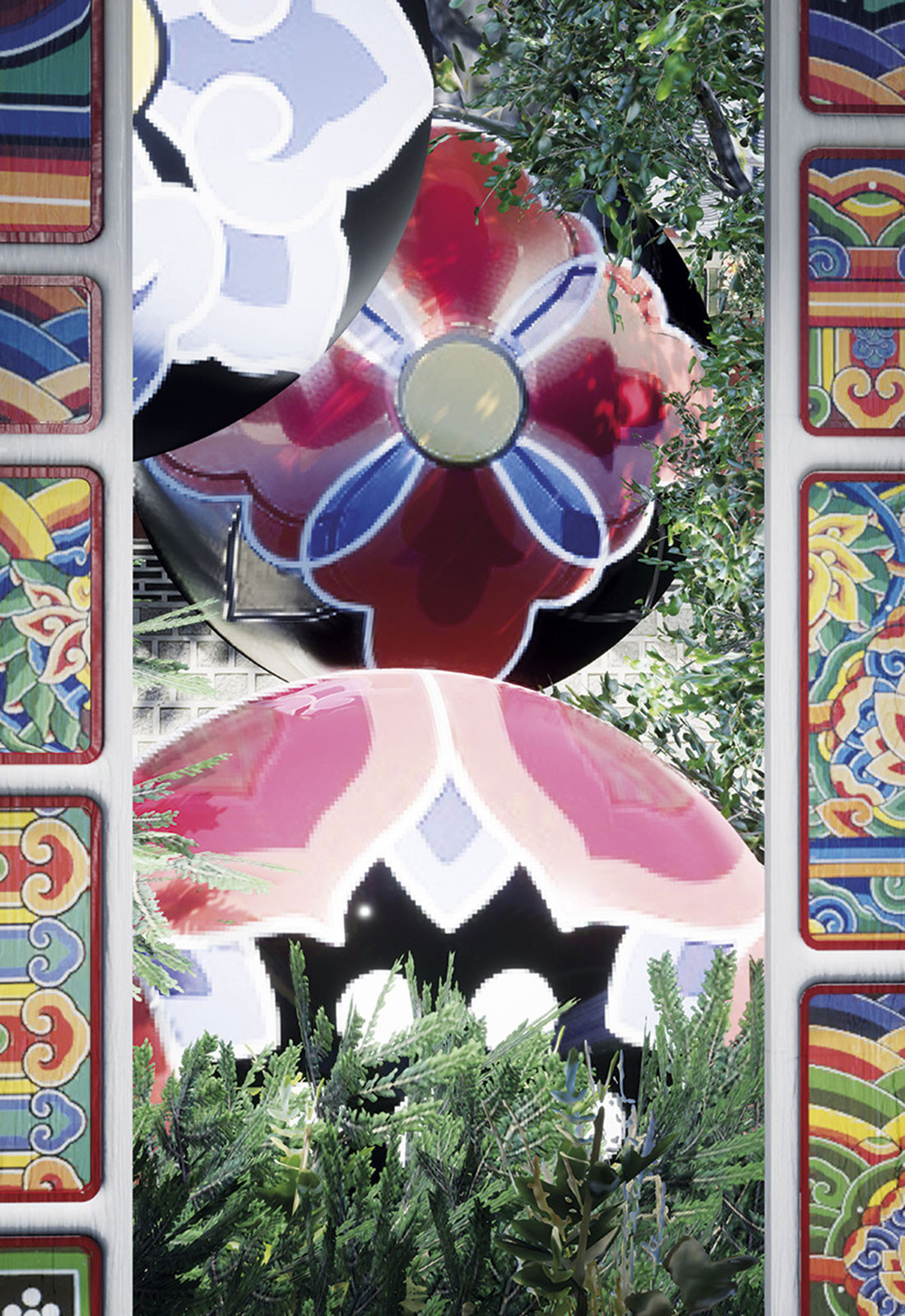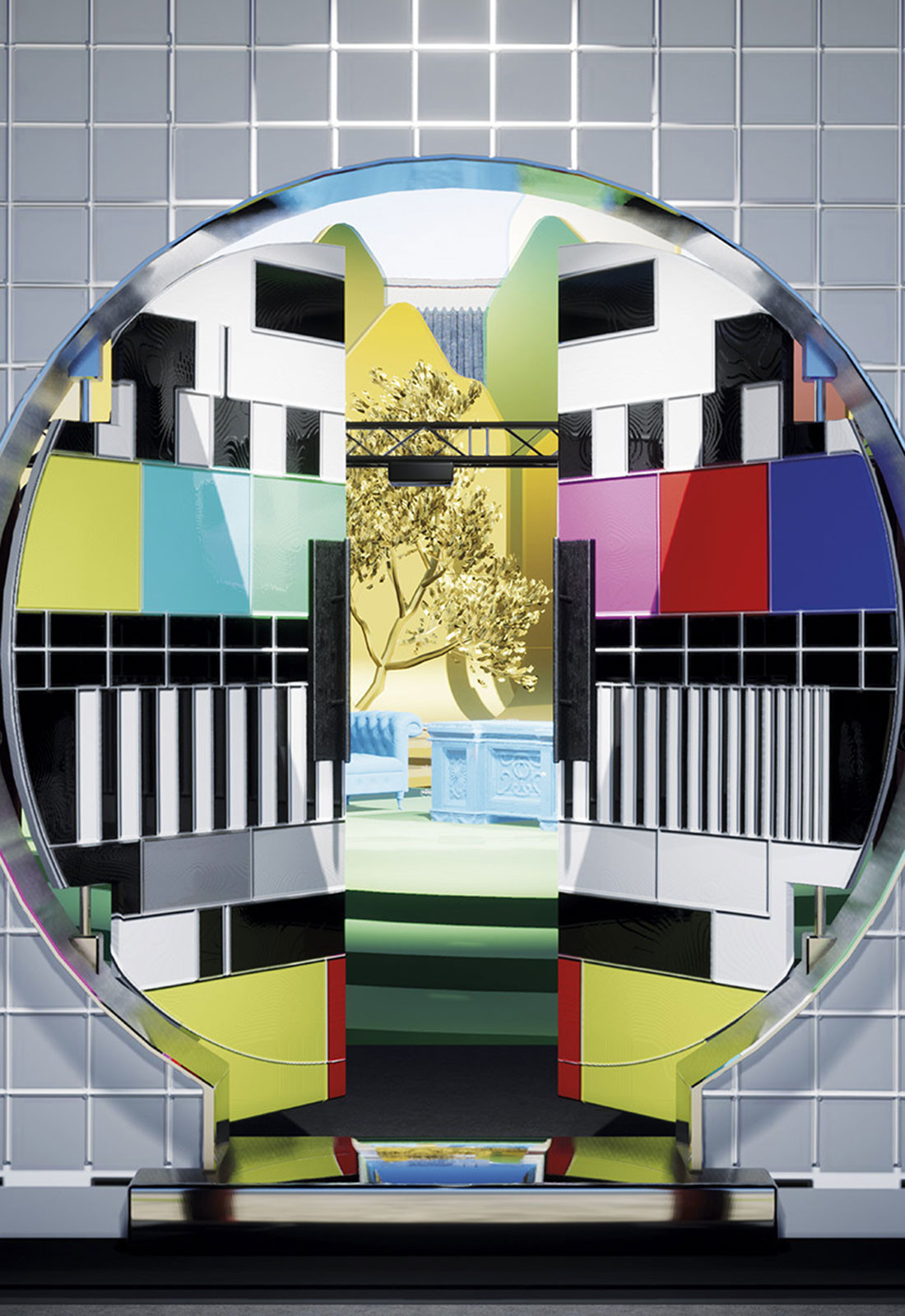Rather than the feeling of walking through a place or watching it in real-time from afar, could virtual tourism offer something deeper?

December 7th, 2020
Even before today’s pandemic conditions, interest in virtual tourism was gaining momentum beyond the pre-travel marketing scope for which it’s mostly used now. There’s immense potential for VR experiences to bring greater ‘access’ to heritage sites, for example – to make them open to experience (of a kind) without risking their physical condition to the stomping feet of the masses. What if virtual tourism could facilitate experiences that were augmented in terms of challenging how we interpret heritage in relation to our present conditions?
Bangkok-founded, London-based multidisciplinary design and research practice Space Popular explored this line of thinking for an exhibition held recently at Seoul’s Deoksugung Palace. The exhibition Architecture and Heritage: Unearthing Future (curated by Jihoi Lee) was presented by the National Museum of Modern and Contemporary Art (MMCA) Korea and Deoksugung Palace Management Office from September 2019 to early April 2020.

The exhibition theme referenced the Korean Empire’s Gwangmu Reform period of 1897-1904 and the imperial family’s resolution to blend the new culture of modernisation with history. The principle of goo-bon-shim-cham (creating the new based on the old) came to drive renovations to Deoksugung at the time, where a sense of East and West coexisting emerged.
Five architecture studios (Space Popular, CL3, Bureau Spectacular, OBBA and Obra Architects) were asked for installations at the Palace and MMCA. They were to present new interpretations of the Korean Empire’s dream for the future city at the beginning stage of modernism. Space Popular chose to work with the Gwangmyeongmun Gate at the Palace, installing Gate of Bright Lights – a video screen that played a sequence depicting a transition from physical to digital through a series of full-size gates that opened to various scenes.

The scenes in Gate of Bright Lights ranged from a realistic depiction of the palace itself to complex glimpses of our contemporary digital interfaces. It was an expression of a ‘new palace’ of pixels and light. It played with the idea of the grand, ornate and embellished palace as a historical form of architectural mass media – speaking to those excluded from admission about mystique and splendour beyond their imagination through the syntax of architectural language (intricate columns, decoratively laid stones, ornate eaves and so on). In creating this image, suggests Space Popular, the palace also constructed an ideal of just and right governance. The palace gate, says the studio, was the ultimate interface between the profane and the sacred.
But the language changed entirely with modern-era architecture. Meanwhile, newspapers, radios and eventually televisions became what Space Popular refers to as “the new interface between ruler and subject” – a trajectory that has culminated in the bright lights in our pockets, and in a new power dynamic. “Through social media, websites and blogs, everyone is now the ruler of their own palace with gates open to the public through the platforms and interfaces of a connected digital world,” wrote Space Popular in their exhibition catalogue text.

“In the twenty-first century, the gates to the most revered places are virtual,” they continued. “Just as the heavy doors of the palace were once the interface that revealed the inner workings and decorum of governance a hundred years ago, the doors in the video can be considered as [the] operating systems (Android, IOS, Windows, TV menus et cetera) of our devices (smartphones, computers et cetera), and once opened they reveal the space beyond: digital platforms (Instagram, VRChat, Line et cetera).”
Exhibition visitors toured through the gates of the past into the virtual gateways of the future. But the richly ornate surfaces of the palace gate now communicate craft, beauty and heritage rather than authority. And in the video, the architectural details are blended with the language of our new virtual gateways – icons, buttons, links and feeds. The experience is not a VR one per se, but it could be. In Gate of Bright Lights, on-screen icons are given apparent three-dimensionality in digital depictions of physical screens; decorative motifs from the architecture float in virtual space and also find new roles as elements of circuitry motifs; and avatars of various species occupy typical palace scenes.

“We just had a very broad question of architectural heritage: how shall one deal with it, think about it, and what is it for? Then we had this very simple thought of putting together the heritage that is, with the heritage that is to come, and that is becoming very much a reality, which is basically the screen,” explains Co-Director of Space Popular, Lara Lesmes. Adds Co-Director Fredrik Hellberg, “People that see this installation might start to question a little bit how they might compare a physical gate into a building or a palace like this [to] the gate that leads into their own social media palace.”
Will there be a valued heritage for the syntax of virtual interaction spaces? What is the significance of the most common systems of digital symbols? The Gate of Bright Lights gets you thinking.
A searchable and comprehensive guide for specifying leading products and their suppliers
Keep up to date with the latest and greatest from our industry BFF's!

In the pursuit of an uplifting synergy between the inner world and the surrounding environment, internationally acclaimed Interior Architect and Designer Lorena Gaxiola transform the vibration of the auspicious number ‘8’ into mesmerising artistry alongside the Feltex design team, brought to you by GH Commercial.

Savage Design’s approach to understanding the relationship between design concepts and user experience, particularly with metalwork, transcends traditional boundaries, blending timeless craftsmanship with digital innovation to create enduring elegance in objects, furnishings, and door furniture.

Suitable for applications ranging from schools and retail outlets to computer rooms and X-ray suites, Palettone comes in two varieties and a choice of more than fifty colours.

Channelling the enchanting ambience of the Caffè Greco in Rome, Budapest’s historic Gerbeaud, and Grossi Florentino in Melbourne, Ross Didier’s new collection evokes the designer’s affinity for café experience, while delivering refined seating for contemporary hospitality interiors.

An outstanding line-up of participants will contribute to a beautifully curated exhibition in Thailand that delves deep into the collective thinking of architecture in our region and helps set a progressive agenda for the future of design.

Salone del Mobile 2024 is only a few weeks away, so we’re highlighting here seven special events, spaces and installations that we’re certainly planning to check out.
The internet never sleeps! Here's the stuff you might have missed

An outstanding line-up of participants will contribute to a beautifully curated exhibition in Thailand that delves deep into the collective thinking of architecture in our region and helps set a progressive agenda for the future of design.

Lacquered in warm timber tones and complemented by high-quality furniture and fixtures, the new HQ for Salta Properties is a home away from home.